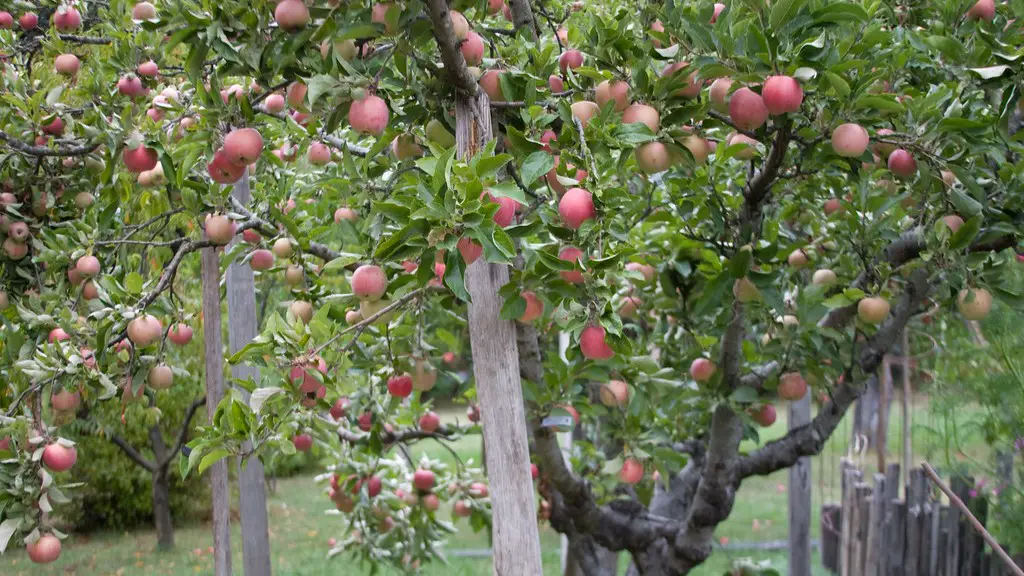Preparing Your Tree
Rooting a palm tree is an incredibly rewarding experience, with the right preparation and care, you’ll be able to watch your new tree flourish in no time. Before beginning the rooting process, it’s important to inspect the tree in order to ensure that it’s healthy and able to root successfully. Make sure that your tree has a healthy crown, with plenty of leaves and is free from any pests or illnesses. This is especially important for palm trees which are used to warmer climates, as they may be more prone to damage from cold temperatures. To ensure that your palm tree is able to take root successfully, you want to make sure it is placed in a stable location that does not experience any major temperature fluctuations.
Choosing The Perfect Soil
Once your tree is ready, it’s time to choose the perfect soil to help it root. Palm trees do best in well-draining soils that are rich in organic matter, with a pH level in between 6.0 and 8.0. Be sure to avoid soils with too much clay, which can retain too much moisture and cause your tree’s roots to rot. If you are unable to find a soil that meets your needs, consider creating your own mixture. You can do this by combining one part garden soil, one part compost, and one part peat moss. Make sure to mix all the ingredients together thoroughly to ensure that the soil is even and uniform.
Planting the Tree
Once you have the right soil in place, it’s time to plant the tree. Start by digging a hole for the tree that is about 12 to 18 inches deep and about the same size as the tree’s root ball. Place the tree in the hole and be sure to spread out the roots evenly. Fill the hole with soil, alternating between layers of soil and the compost mixture. Gently pat down the soil and then water the tree thoroughly. This will help the compost to sink and create a nice firm foundation.
Stakes and Guying
Now that your tree is planted it’s important to ensure that it is secure and steady. To do this you can use stakes and guying. Place two stakes at opposite sides of the tree, making sure that they are driven firmly into the ground. Then, attach a length of strong garden twine or rope between the two stakes and wrap it around the tree a few times. This will help to keep the tree upright and secure and prevent the tree from swaying or becoming uprooted. It’s important to check the guying regularly and adjust as needed.
Caring For The Tree
Once your tree is planted and secure, it’s time to begin taking care of it. Palm trees need plenty of water to flourish, so make sure that the soil is well-watered but not over-saturated. While palm trees require more water than other trees, it is important to avoid overwatering. Monitor the soil near the base of the tree and if it is wet to the touch, wait a few days before watering again. Palm trees will also benefit from regular fertilizing, ideally during the spring and summer months when the tree is actively growing.
Dealing With Pests and Diseases
When it comes to taking care of your palm tree, prevention is key. Inspect your tree regularly for any signs of pests or disease. Powdery mildew is a common problem for palm trees, so make sure to keep an eye out for any white patches on the leaves. If you do find any pests, you can use a mixture of water and mild soap as a natural insecticide. Moreover, it’s important to prune away any dead or diseased branches to avoid spreading any disease throughout the tree.
Protection From the Elements
To ensure that your palm tree is able to thrive, it’s important to protect it from the elements. In especially hot or cold climates, it can be helpful to use wind protection screens or plant covers to shield the tree from extreme temperatures. Additionally, try to avoid exposing your tree to strong winds or excessive rainfall, as these can cause excessive stress on the tree and lead to damage. With the right care and conditions, your palm tree should be comfortably settled in its new home within a few months.
Providing Adequate Sunlight
Palm trees grow best when provided with ample sunlight, so pick a spot that gets a good amount of sunshine throughout the day. If your location does not provide enough natural sunlight, you can get creative and use artificial lighting to turn your tree’s environment into a sunnier place. Consider setting up floodlights or motion sensors to provide your tree with an artificial source of light. Another option is to use a sunroom to house your tree, as this will provide an environment with nearly year-round sunlight.
Repotting Your Tree
Once your tree has taken root and begins to outgrow its pot, it is time to repot your palm tree. Start by removing the tree from its pot and gently tease apart the soil and roots. Make sure to be gentle and avoid damaging the delicate root system. Place the tree in its new pot, filling the pot with fresh soil. Gently fill the pot, ensuring that the soil covers the root system and that the tree is firmly planted in its pot. Water the tree and add a support stake or guying system if necessary.
Watering Your Tree
Palm trees require a lot of water and can quickly become dehydrated. If you live in a location with hot climates, you may need to water your tree several times a week. Consider setting up a drip irrigation system to help reduce water waste and provide your tree with the continuous water it needs. Additionally, use a soil moisture meter to help monitor the soil and make sure your palm tree is getting just the right amount of water.
Fertilizing Your Tree
Nutrient-rich fertilizer is essential for the healthy growth and development of palm trees. Choose a fertilizer specifically formulated for palms, as these can provide the right balance of nutrients your tree needs. Also, time your fertilizing sessions with the changing seasons. In the spring and summer months, when the tree is actively growing, it is best to fertilize every two months or so. During the winter months, you can reduce this to once a month or every other month.
Pruning Your Tree
Regular pruning is important to help maintain the appearance of your palm tree and keep it healthy. Start by removing any damaged or diseased fronds, as these can inhibit the tree’s growth and spread disease. Prune away any branches or fronds that are bent or twisted, as these could potentially break under the weight of the tree. Additionally, you may want to prune away any branches that are blocking the view of the tree. As always, make sure to use sharp pruning tools to ensure a clean cut.



